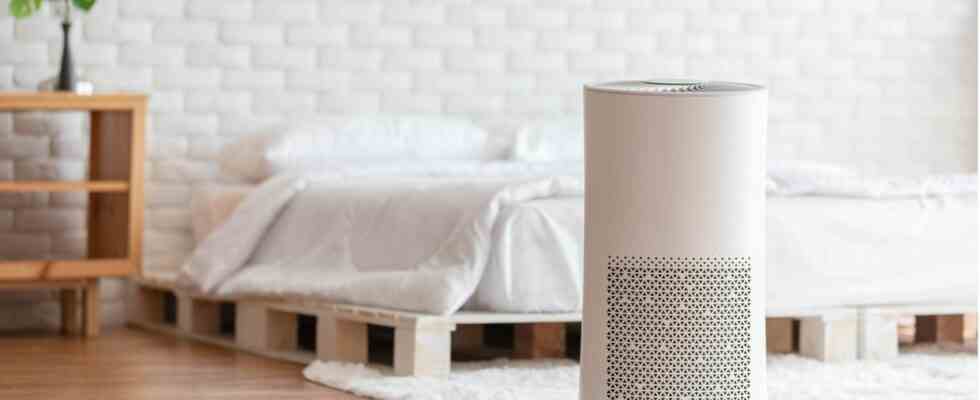Corona aerosols
Indoor air filters: These devices minimize the risk of infection
An air filter is able to suck corona aerosols out of the air, says Stiftung Warentest
© Jomkwan / Getty Images
Air purifiers were originally developed to reduce fine dust, pollen and mold spores in closed rooms – and thus also the health risk. Since the corona pandemic, however, the devices have been increasingly used to filter infectious aerosols from the air. With success.
Basically, it is important to know that air purifiers cannot minimize the number of corona viruses because they are too small. However, the devices are able to filter aerosols from the air that transmit the dangerous SARS-CoV-2 virus. In closed rooms that are rarely ventilated, the fine droplets collect quickly – and thus increase the risk of infection many times over. For this reason, the purchase only makes sense if several people are in one room. The question arises: which air filters are suitable for the apartment, how do the devices work and what is the level of protection? Stiftung Warentest found out.
This is how an air filter for the apartment works
Whichever device you choose, the way it works is always the same: Everyone air filter has a fan that sucks in the ambient air, cleans it and then sends it back into the room. Depending on the manufacturer, there are different levels to choose from. And the number of square meters, i.e. the size of the room to be cleaned, can vary from device to device – for this reason, one air filter is not always sufficient for particularly large rooms. In order to find out how well the devices work in practice, Stiftung Warentest tested three air filters that were (successfully) examined in 2020. At that time, however, no tests were carried out to determine whether the aerosols were also filtered out of the air. This was made up for in early 2021.
Stiftung Warentest recommends these air filters
The Philips AC2889/10, the Rowenta PU6080 and the Soehnle Airfresh Clean Connect 500 were tested. All three air filters were switched on for 20 minutes in a room with an area of 16 square meters and a volume of 40 cubic meters. The result was that the two devices from Philips and Rowenta were able to minimize aerosols by up to 95 percent – and thus took first and second place. The model from Soehnle still managed 90 percent and thus ended up in 3rd place:
1st place: Philips AC2889/10
Of the AC2889/10 air purifier by Philips is suitable – according to the manufacturer – for a room size of up to 79 square meters. It can be controlled via app (iOS and Android), and it also provides comprehensive information about the air quality in closed rooms.
2nd place: Rowenta Intense Pure Air Connect PU6080
The Intense Pure Air Connect Air purifier PU6080 von Rowenta has a four-stage filter system (pre-filter, activated carbon, Allergy+, Nanocaptur) and, according to the manufacturer, should be able to filter the aerosols from a room of up to 140 square meters.
3rd place: Soehnle Airfresh Clean Connect 500
Of the Air Fresh Wash 500 Air washers from Soehnle, on the other hand, can only clean small rooms: According to the manufacturer, the output is sufficient for just 35 square meters. Thanks to automatic monitoring of the room air, the device should also ensure optimal air humidification.
Another note:
In fact, these values cannot be maintained by the devices in the long term: As soon as their filters weaken, the performance also drops: at Philips to 90 percent, at Rowenta to 80 percent and at Soehnle even to 46 percent.
How safe are air filters in the home?
Even if Stiftung Warentest was able to find out that air purifiers filter aerosols from the air and minimize the risk of infection – unfortunately you do not have 100% protection in closed rooms (together with other people). For example, if you were to sit at a table with a person who carries the corona virus, they would exhale permanently infected aerosols. However, since the air filter cannot reduce the exposure to 100 percent, you would still remain at risk of infection. Even if the risk were minimal thanks to constant air purification.
Note: The article was first published in December 2021.
You might also be interested in:
This article contains so-called affiliate links. There is more information here.

